Round-up: 4 filthy guitar distortion pedals
Fuzz-filled stompboxes for dirty guitarists
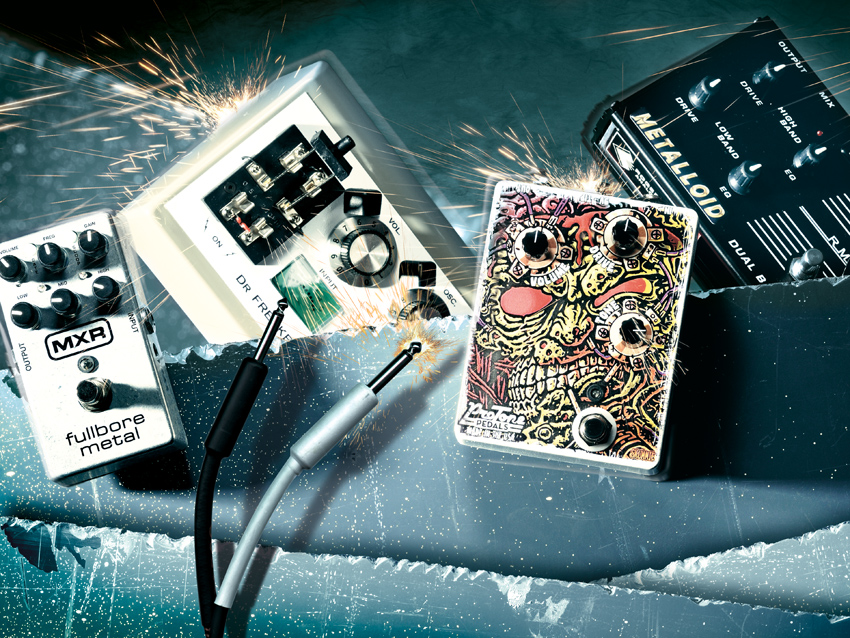
4 filthy guitar distortion pedals
Distortion is one of the key weapons in any guitarist's arsenal. Here are four filthy fuzzboxes to send you into overdrive...
London, England, 1964. A part-time inventor named Roger Mayer gives a prototype fuzz pedal to an up-and-coming session man called Jimmy Page, and in doing so, transforms the sound of rock ’n’ roll from twangy and twee to filthy and furious.
Mayer’s fuzzbox might not have been quite the first, but the prolific work of his big-name clients - Page, Jeff Beck, Big Jim Sullivan - ensured the sound got everywhere, and by the time Keith Richards clattered through the 1965 smash (I Can’t Get No) Satisfaction, the revolution was on.
Distortion is often the first effect on a guitarist's shopping list (aka ‘overdrive’, ‘fuzz’ or simply ‘filth’) and our love affair with it shows no sign of cooling. But these days, it takes different forms. Putting aside the fact that even basic amps are capable of distortion, the rise of multi-FX and modelling units like the Line 6 POD mean that a standalone stompbox has to be bloody good to justify its relative expense.
But then, you only have to check out the pedalboards of the stars to appreciate that dedicated pedals still very much have a place.
Would you seriously consider buying a compression pedal when you could blow the roof off with one of these? First up is ProTone’s Skumstortion (£129), followed by the bonkers Dr Freakenstein Fuzz (£249) from UK newcomers Rainger. We’ve got the compact FullBore Metal (£149) from effects guru MXR, and the long-awaited return of Mr FX himself, with the Roger Mayer Metalloid (£215). This will get loud.
First up: ProTone Skumstortion review
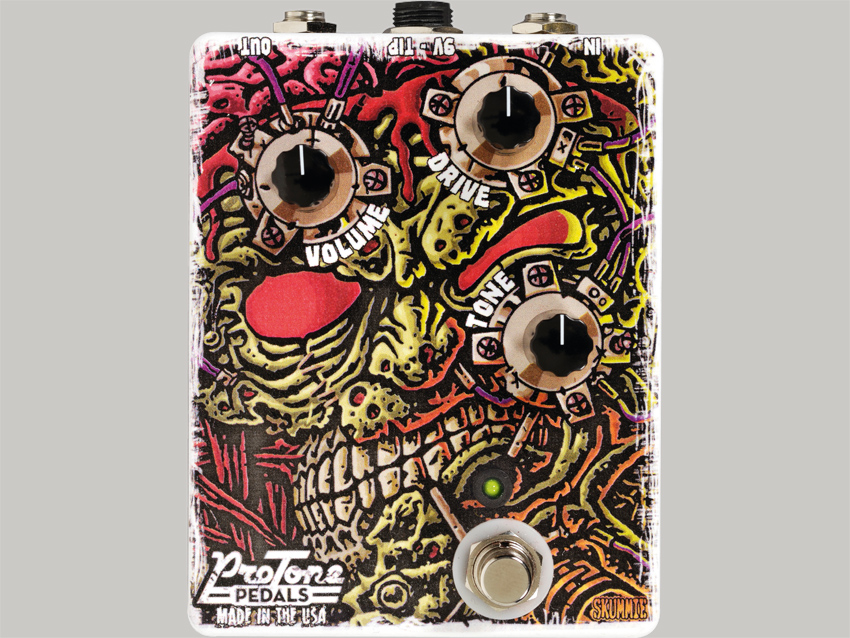
ProTone Skumstortion review
Review
Like pedals of yore, the Skumstortion has one effect and minimal knobs, so it’ll live or die on the class of its distortion. ProTone is confident, citing the “wicked high-gain sustain that can rival a stack of amps”, and promising “from screaming leads to rhythm work, it delivers the goods.”
So you clock the rotting skull on the Skumstortion’s bulletproof chassis and you think, “This is going to be mental!” And it kinda is. Set the drive and tone at two-thirds, stomp the footswitch, and you get a really brittle, biting attack that’s totally satisfying for old-school metal, giving good note articulation and enough low end to shake the ceiling.
Many rockers will happily stick there, and their £129 will be well-spent. But when the hairier contingent crank the drive to the max on the hunt for savage, modern, Mesa-style filth, they’ll get diminishing returns, with the Skumstortion never quite going as crazy as its blurb suggests. Or maybe our ears are just desensitised after all these years.
Next: ProTone Skumstortion verdict
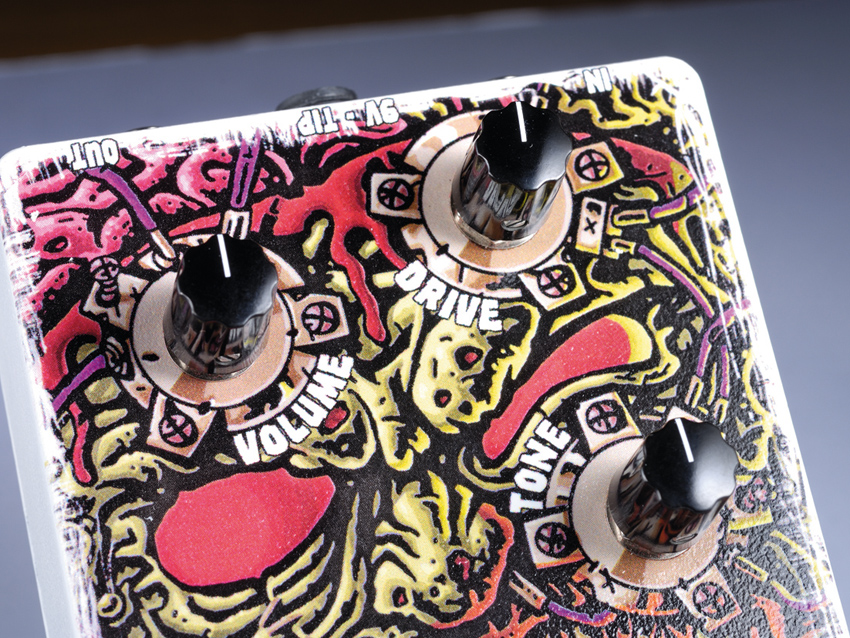
ProTone Skumstortion verdict
Verdict
The ProTone Skumstortion might beat the hell out of your amp’s distortion channel, but in the bearpit of the pedal market, it’s perhaps best described as a ‘solid choice’, not a life-changing one.
With that said, it’s the cheapest in this round-up, perhaps the most roadworthy (the hand-made US chassis is built like a Sherman tank), and certainly the least fussy, and would therefore make a great first choice for rockers with gigs booked.
But don’t blow your wad just yet…
4 out of 5
Pros: Tough, simple, great rock sound.
Cons: Not as crazy as we’d like.
Next: Rainger Dr Freakenstein Fuzz review
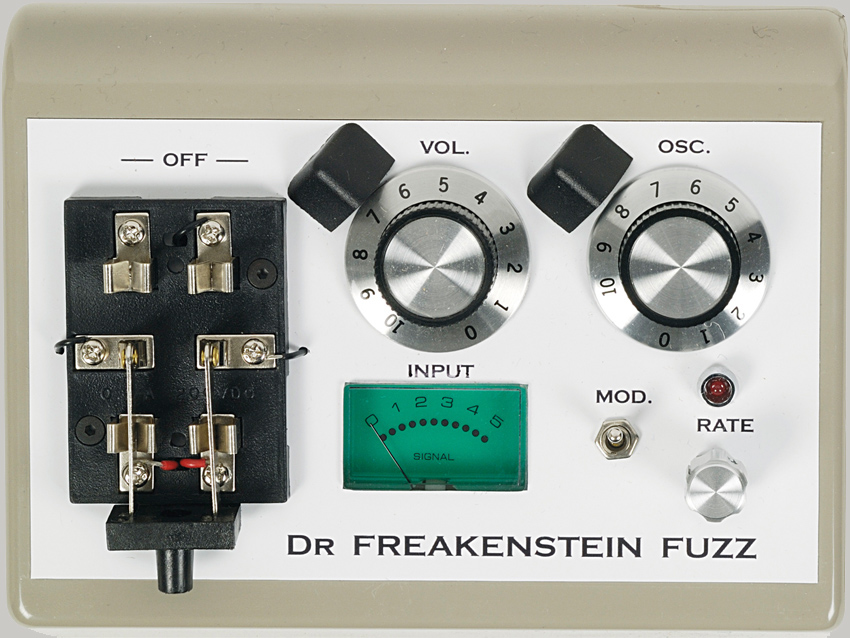
Rainger Dr Freakenstein Fuzz review
Review
David Rainger has created a monster. “It’s a very distinct type of distortion,” says the London-based boffin, and he ain’t kidding. Operated by hand (but sold with a foot-activated pressure pad known as Igor), it uses ‘oscillator synchronisation’. This basically gives monster sustain and freaky harmonics based on the notes you play and the position of the osc dial.
Start off with the osc full up and you’ve got the most traditional tone, and even that is bonkers: a fuzzed-up, raggedy-arsed, sustain-mungous, Matt Bellamy-style grind that’s best for single notes and can be ‘killed’ on a sixpence with the noise gate.
Spin the osc and things get weirder as the unit adds harmonics, while using the mod and rate dials to automatically sweep the osc is more divisive, like a wah, phaser and synth being abused.
The Igor pad is a cool touch but its fiddly size (plus the fragile main unit) suggests it’s one for studio boffins, not road warriors.
Next: Rainger Dr Freakenstein Fuzz verdict
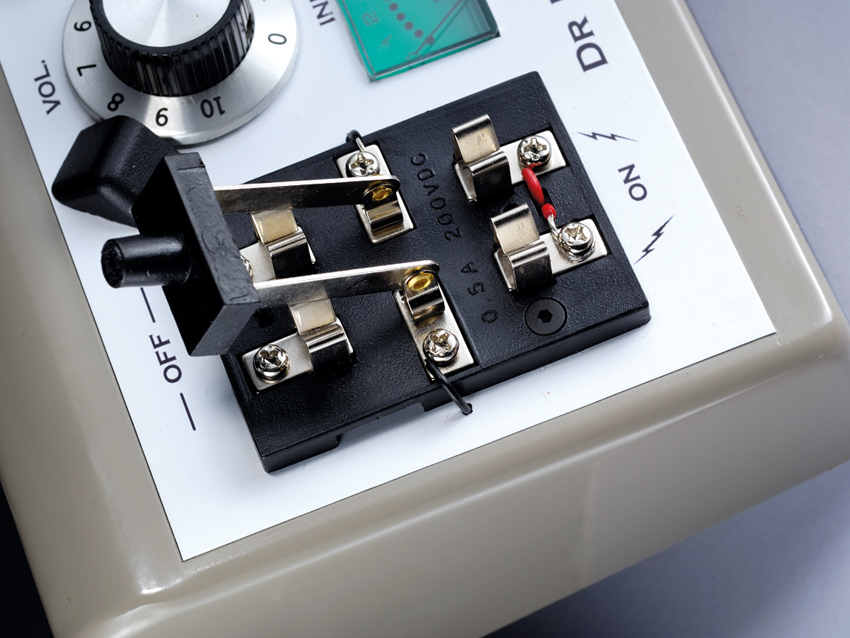
Rainger Dr Freakenstein Fuzz review
Review
Tough one, this. We would love to give this pedal an unreserved thumbs-up. In a world of identikit stompboxes, it made us grin and - with a bit of tweaking - gave us some mindblowing effects.
But if you’re a cash-strapped covers band in need of a no-nonsense filthbox for club circuit gigs, you’ll be back at the shop in the morning with the receipt. Your choice.
4 out of 5
Pros: Unique, memorable, bonkers.
Cons: Too off-the-wall for some.
Next: MXR FullBore Metal review
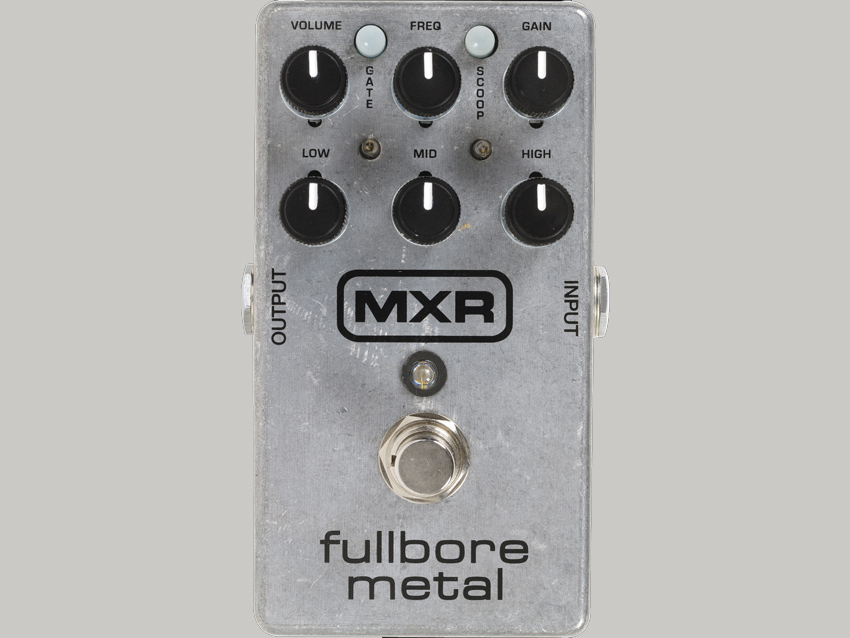
MXR FullBore Metal review
Review
Back to sanity, then, with the FullBore Metal: a chunky little housebrick at which you wouldn’t look twice if it didn’t have those three magic letters - ‘MXR’ - on its chassis. The FX legend is touting “ultimate riff power” and “devastating contemporary metal tones” this time, from a stompbox that will “turbo-charge your guitar with ultra high-gain.”
OK, so the FullBore is ‘just’ a distortion pedal, but it’s done to near-perfection. Fat and full at low gain, pushing the dial makes this pedal turn seriously nasty, with a saturated, jaw-breaking bark that punches holes in the mix and makes its rivals seem just a little polite by comparison.
Tonally, it’s your dream ticket for modern metal, and that’s consolidated by the brilliant trimmings, with a scoop switch that instantly trims the fat from your tone, Metallica-style, and an optional noise gate that kills anything below a set volume (although you’ll need to disable it for more subtle play).
It’s also the only one with a three-band EQ, and the most compact, which matters on the road.
Next: MXR FullBore Metal verdict
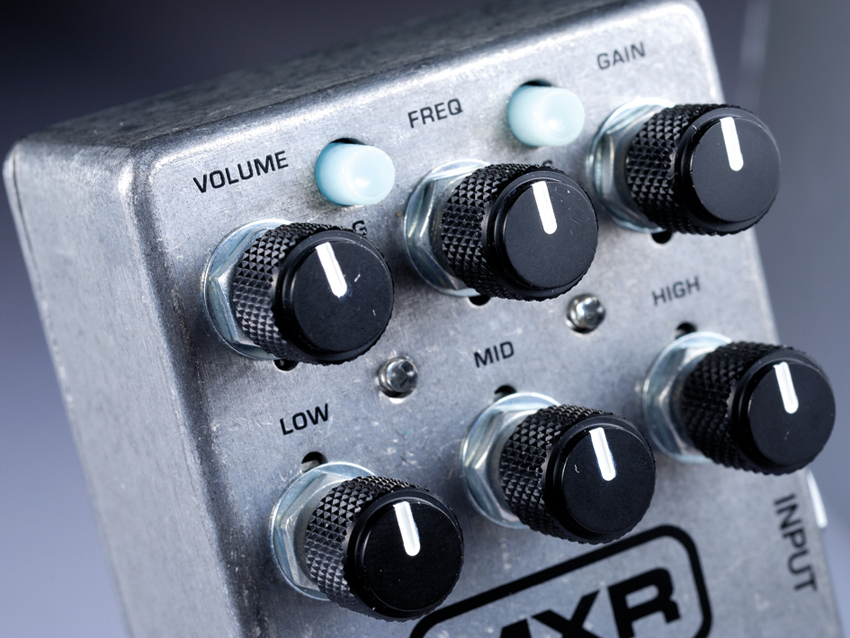
MXR FullBore Metal verdict
Verdict
Read no further, gigging metallers, for this is your filth pedal. There's enough tweakability to hold your interest and with bone-snapping aggression, this is worthy of a slot on anyone’s pedalboard. In fact, the only sticking point here is the price.
With the street price on the also-great Boss Metal Zone coming in at around £70, MXR might have misjudged the depth of our pockets. The advice, as ever, is to stomp it and see.
4 out of 5
Pros: Compact, versatile, psychotic.
Cons: Pricey for ‘just’ a pedal.
Buy: MXR FullBore Metal is currently available from Thomann
Next: Roger Mayer Metalloid review
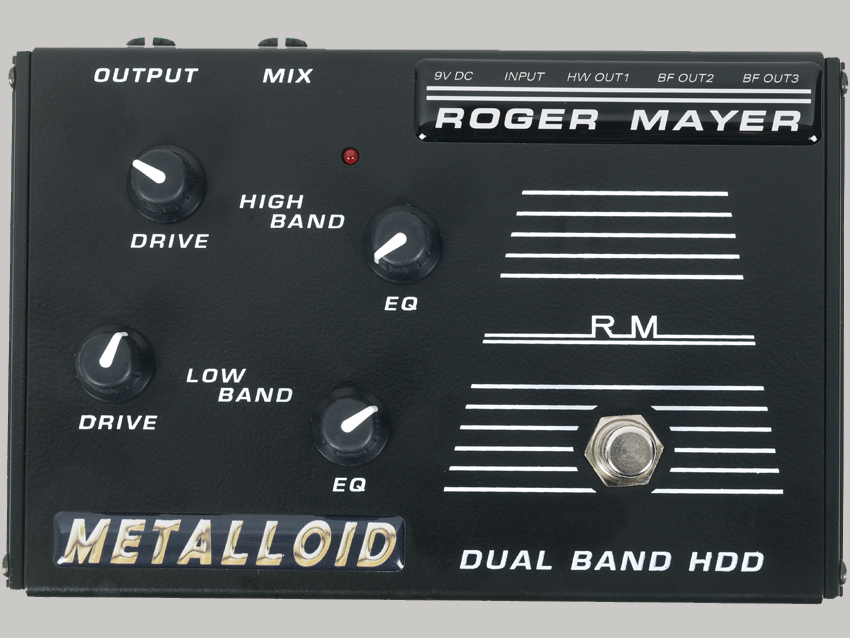
Roger Mayer Metalloid review
Review
Roger Mayer is not happy. “I’m bored of everyone making Tube Screamer copies,” he tells us. The solution, he says, is the Metalloid, a dual-band parallel distortion with individual control over your axe’s high and low frequencies. “In the studio, it’s common to build a guitar tone with parallel sounds,” he says. “I thought, ‘Let’s bring that to the floor’.” Why hasn’t anyone done this before?
The Metalloid is dead simple in use, with dedicated gain and EQ for each band allowing unprecedented fine-tuning. Cut the low gain while cranking the high and you’ve got a tight, warm chug on the bass strings, and a simultaneously searing, gravelly bite for solos. Reverse that for a fuzztastic rhythm crunch, fused to crystalline highs.
There are more aggressive pedal tones out there, but the Metalloid is pure old-school quality - a characterful, complex, valve-like distortion that sounds like rock’s back pages.
Next: Roger Mayer Metalloid verdict
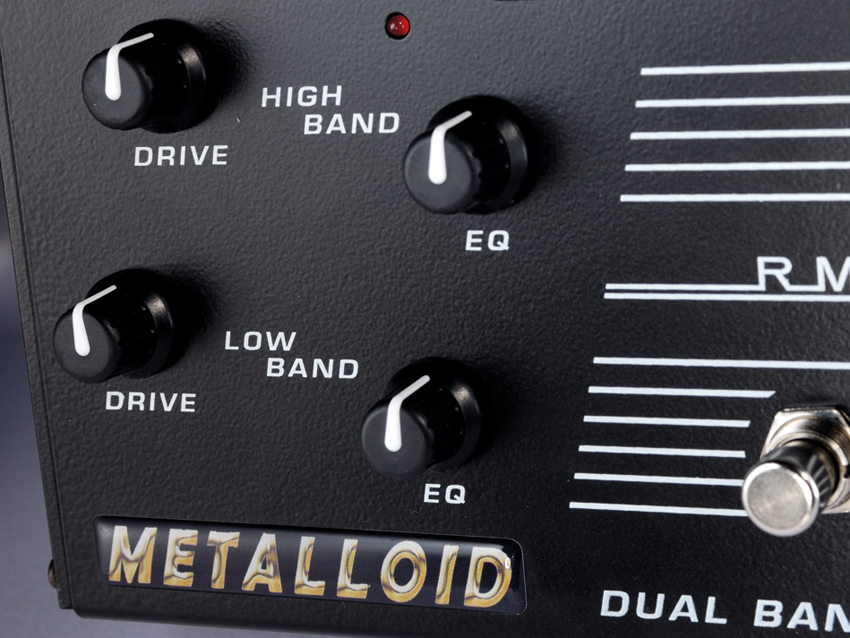
Roger Mayer Metalloid verdict
Verdict
Despite our frothing, the Metalloid is not for everyone. Players who just want to get on with it will baulk at the price tag, shrug at the tone-splitting technology, and pick up the MXR instead.
But if you’re a genuine tonehead, this groundbreaking product should already have pricked up your ears. 40-odd years after his first fuzz, the world is still playing catch-up with Roger Mayer.
5 out of 5
Pros: Genius technology that works.
Cons: Expensive, not for everyone.
Liked this? Now read: The top 10 stompboxes we can't live without and Round-up: 8 great fuzz pedals
Connect with MusicRadar: via Twitter, Facebook and YouTube
Get MusicRadar straight to your inbox: Sign up for the free weekly newsletter